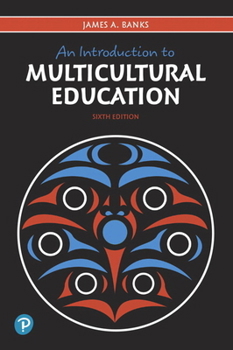An Introduction to Multicultural Education
Select Format
Select Condition 
Book Overview
A brief, highly readable overview of the important concepts, principles, theories, and practices of multicultural education Presenting need-to-know information in a concise, highly readable style, An Introduction to Multicultural Education helps busy pre-service and practicing educators increase their understanding of what multicultural education means for the increasingly diverse classrooms in the United States today. Leading authority James A. Banks includes the widely used concepts and paradigms that he has developed, such as the dimensions of multicultural education; approaches to multicultural curriculum reform; types of knowled≥ and how to teach students to know, to care, and to act. In addition, the text covers the characteristics of effective multicultural lessons and units, the major benchmarks educators can use to determine sound multicultural education implementation, benchmarks to reform, and much more. Filled with new developments, trends, and issues as well as current statistics, citations, and references, the 6th Edition now includes Reflection and Action Activities, end-of-chapter summaries, and a new typology of citizenship.
Format:Paperback
Language:English
ISBN:0134800362
ISBN13:9780134800363
Release Date:January 2018
Publisher:Pearson
Length:208 Pages
Weight:0.70 lbs.
Dimensions:0.5" x 6.0" x 8.9"
Customer Reviews
2 ratings
Best history for beginners on the market
Published by Thriftbooks.com User , 20 years ago
I have been using James Banks' Teaching Strategies for Ethnic Studies for teaching intercultural education at the college level for almost a dozen years and have yet to find one better. The first semester when I was preparing to teach the class, I had not yet chosen a book when, leaving our college library one day, I noticed an old edition of Banks' book on the give-away shelf. His name jumped out at me since he was noted in my doctoral studies as the foremost authority in the field at that time. I read the book over Christmas break just before my course began and was ecstatic to find that such a learned author had compiled chapter histories of ten major ethnic groups in the United States. These are histories that until recent times were never taught in schools. They are eye-openers in ethnic history from the eyes of those who experienced not only the Civil Rights era, but one to two centuries of the history of our country's ethnic groups before that. As a Caucasian, I was extremely impressed with Banks' extensive work, something no one else until his time had attempted to do, especially in one volume. Even after changing texts for two semesters, thinking students might appreciate something different, they begged me to return to an approach that would tell 'the stories' of suppressed peoples in the United States. I returned to Banks and plan to stay with him for the rest of my carrer. In recent semesters, my students have been creating power points highlighting chapter histories in Banks (He's an excellent resource for that), resulting in some rich discussions that might not have happened otherwise. I have come to the conclusion that most of us don't live long enough to recall or appreciate the struggles of peoples who came before our time, especially those that were, up until now, seldom taught in our institutions. Banks book, especially the chapter histories, helps to fill that gap in our knowledge and lives.
Easy to get into the world of multicultural education
Published by Thriftbooks.com User , 23 years ago
Frankly speaking, this book is easy to understand for a foreigner like me. Banks uses simple words and fluent writing style to sketch the outline of multicultural education. Althought I think it simplifies the content of multicultural education, it's still a good textbook for a person who begins to enter the world of multicultural education.






